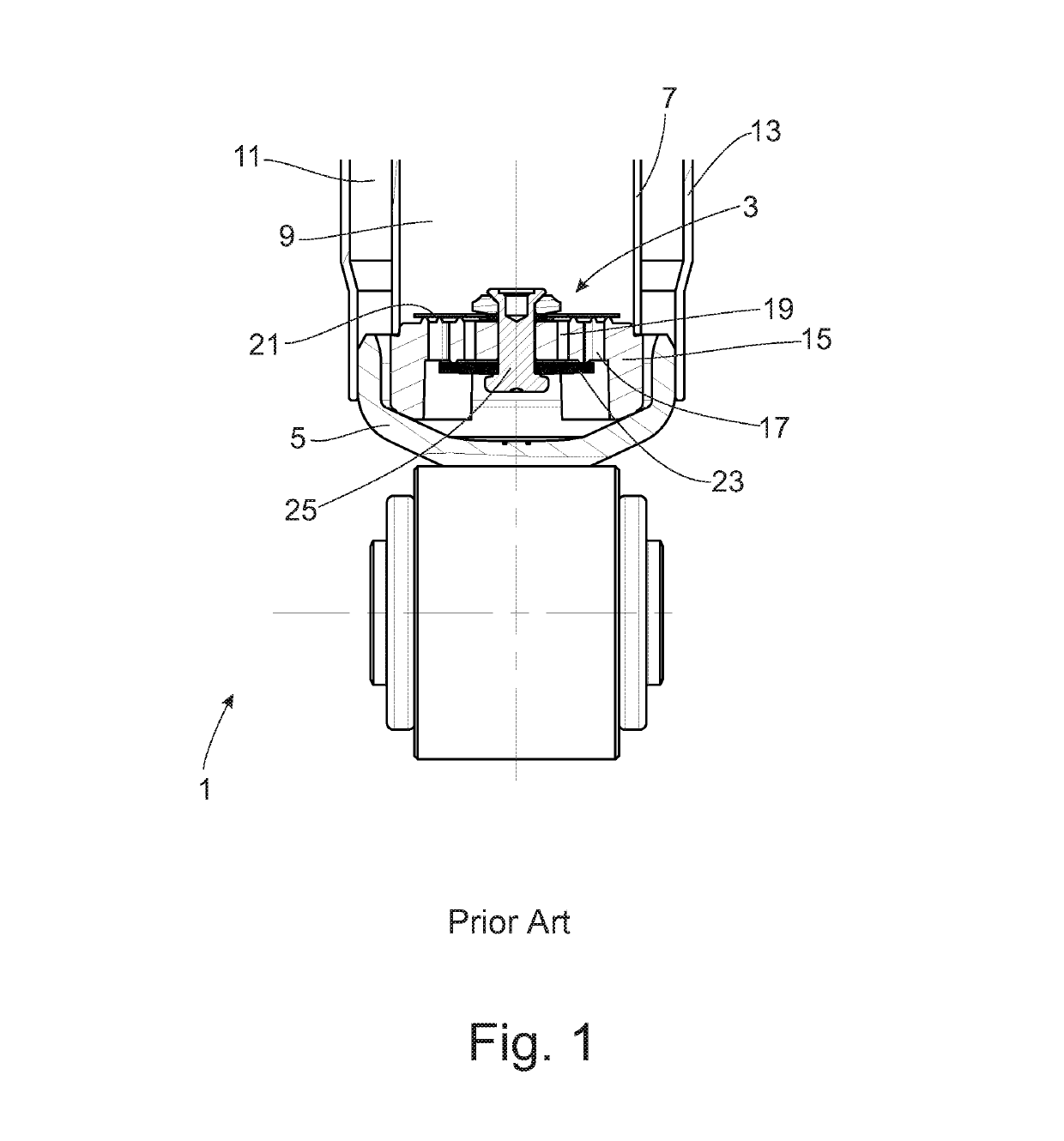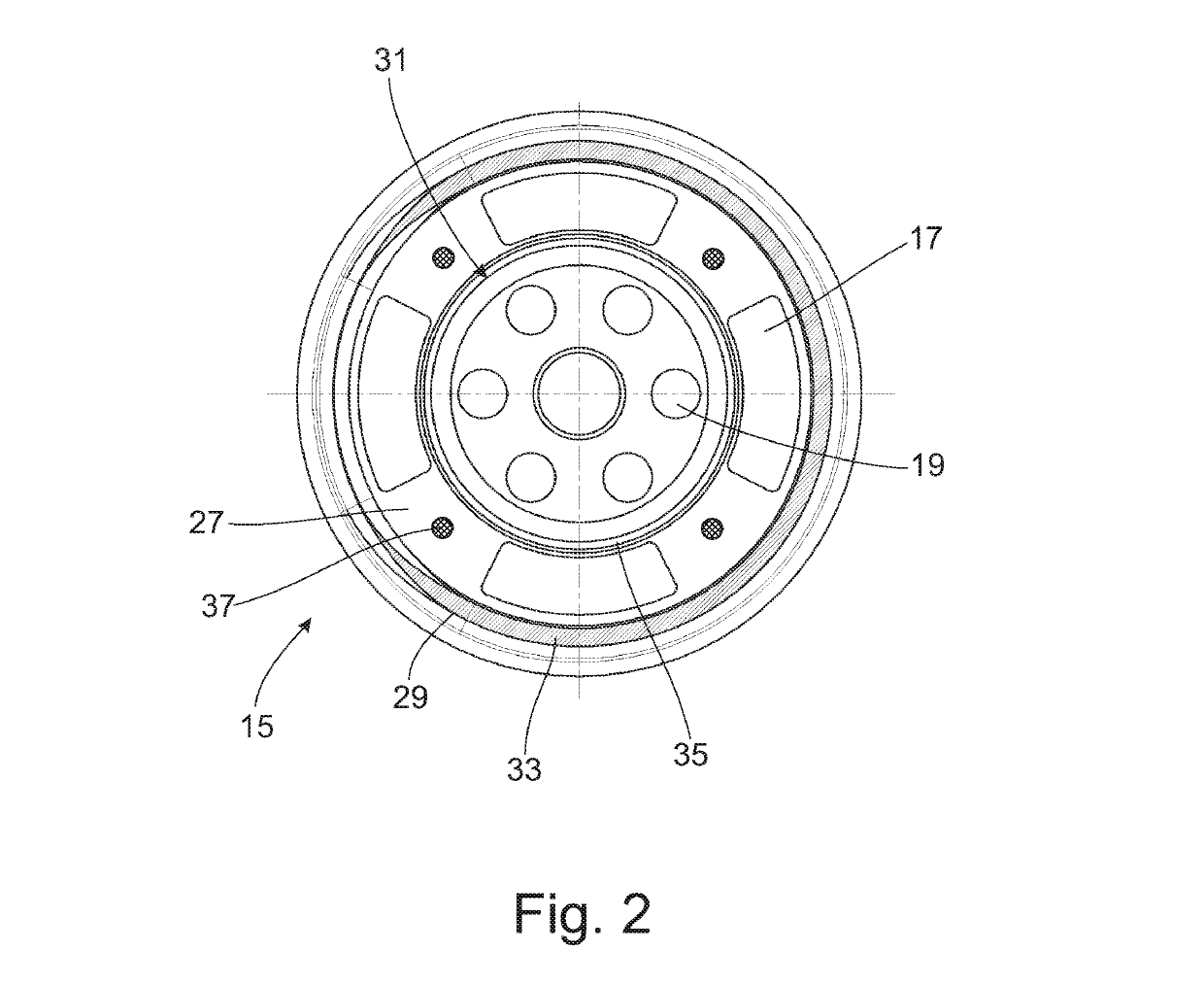Damping Valve, In Particular For A Vibration Damper
- Summary
- Abstract
- Description
- Claims
- Application Information
AI Technical Summary
Benefits of technology
Problems solved by technology
Method used
Image
Examples
Embodiment Construction
[0036]FIG. 1 shows a section of a vibration damper 1 in the area of a damping valve 3 which is operatively arranged between a working chamber 9 and a compensation space 11 at a base 5 of a cylinder 7. The compensation space is limited by an outer receptacle 13. In principle, the damping valve could also be placed at a piston rod or at any other location.
[0037]The damping valve 3 comprises a damping valve body 15 with at least one throughflow orifice 17; 19 which is at least partially covered by at least one valve disk 21; 23 under the action of a closing force. The closing force can be achieved by a spring of any type of construction or by a preloading of the valve disk 17; 19. In the present embodiment, the valve disk is preloaded via a fastening element 25 acting centrally on a valve seat surface.
[0038]As can be further appreciated from FIG. 1, the damping valve 3 has two throughflow directions with separate throughflow orifices on different pitch circles. The throughflow orifices...
PUM
| Property | Measurement | Unit |
|---|---|---|
| Force | aaaaa | aaaaa |
| Elastomeric | aaaaa | aaaaa |
| Circumference | aaaaa | aaaaa |
Abstract
Description
Claims
Application Information
 Login to View More
Login to View More - R&D
- Intellectual Property
- Life Sciences
- Materials
- Tech Scout
- Unparalleled Data Quality
- Higher Quality Content
- 60% Fewer Hallucinations
Browse by: Latest US Patents, China's latest patents, Technical Efficacy Thesaurus, Application Domain, Technology Topic, Popular Technical Reports.
© 2025 PatSnap. All rights reserved.Legal|Privacy policy|Modern Slavery Act Transparency Statement|Sitemap|About US| Contact US: help@patsnap.com



